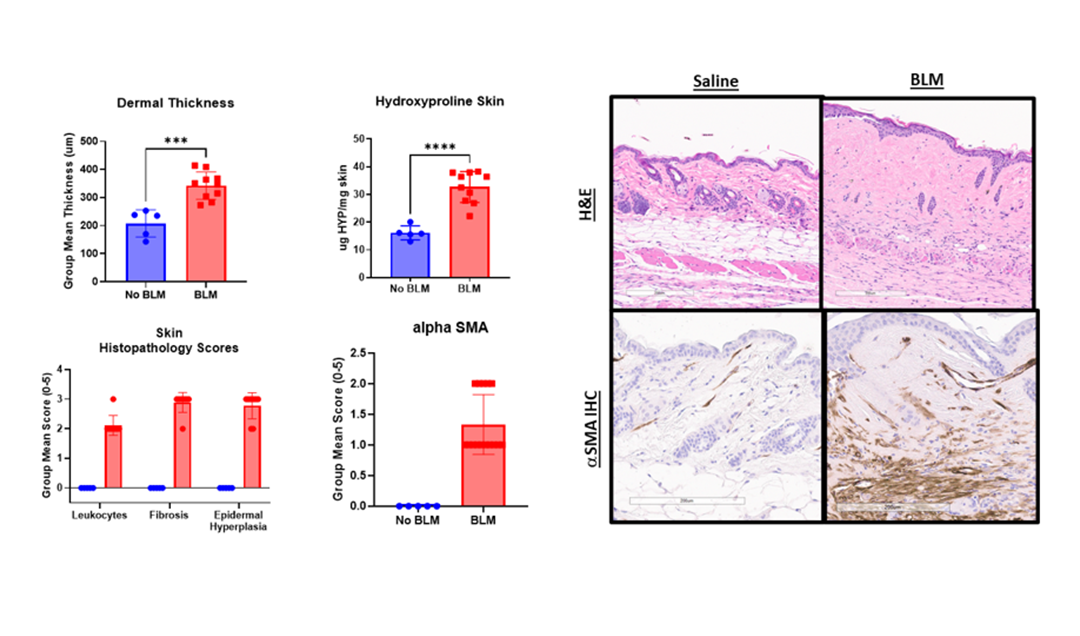Dermal fibrosis, also known as scleroderma (skin fibrosis), is a condition characterized by the abnormal accumulation of collagen in the skin, leading to thickening, scarring, and loss of skin elasticity. This progressive fibrosis can significantly impair skin function and aesthetics and is often associated with systemic complications.
Aragen offers two specialized animal models for dermal fibrosis research to enable understanding and developing treatments for this complex disease:
- Bleomycin-Induced Scleroderma Mouse Model and
- Regular Diet vs. Western Diet Models.
Bleomycin-Induced Scleroderma Mouse Model
The bleomycin-induced dermal fibrosis model is a well-established animal model used to study the role of genes and therapies in the progression of scleroderma. It captures both the early inflammatory phase, where immune responses trigger skin inflammation, and the fibrotic phase, which represents the end-stage of the disease, characterized by excessive collagen deposition and skin thickening. In this model, after bleomycin administration and treatment ex vivo analysis of skin is performed to evaluate the efficacy of the test compound.
The model induces systemic sclerosis (scleroderma) in mice, primarily affecting the skin with characteristics such as thickening, collagen deposition, and fibrosis, closely resembling human scleroderma. It is a valuable tool for studying the mechanisms of dermal fibrosis and testing therapies targeting immune dysregulation. Aragen’s expertise in designing and establishing preclinical efficacy studies offers key insights into preventing or mitigating fibrosis by advancing treatment options for systemic sclerosis.
Induction of fibrosis: bleomycin administration
Treatment
(options: IP, IV, SC, IM, ID, intranasal, sublingual)
Daily observations/body weights
Terminate study
(collect skin and lungs)
Ex-vivo analysis
(Histology, Hydroxyproline, Lung weights)

Induction of lung fibrosis:
bleomycin administration
Treatment
(options: IP, IV, SC, IM, ID, Intranasal, Sublingual)
Daily observations/body weights
Functional readouts, Terminate study/harvest organs
Endpoint analysis
(Histology, Hydroxyproline, Lung weights)

Regular Vs Western Diets (WD) Scleroderma Models
Scleroderma animal models can be modified to evaluate the influence of diet on fibrosis progression. Using a Western diet, which is high in fat and sugar, may exacerbate the fibrosis process, mimicking the real-world impact of diet on inflammatory and fibrotic diseases. At Aragen, we provide these models that are valuable for understanding how metabolic factors, such as diet and obesity, contribute to fibrosis in skin and other tissues, and for testing dietary interventions as potential therapeutic approaches.
